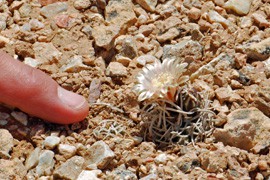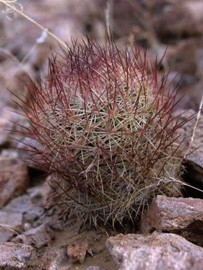Cronkite News has moved to a new home at cronkitenews.azpbs.org. Use this site to search archives from 2011 to May 2015. You can search the new site for current stories.
Protection, critical habitat proposed for rare cactus in deal between feds, advocates
PHOENIX – The U.S. Fish and Wildlife Service has proposed adding two rare Arizona cactuses to the endangered species list under an agreement with an environmental group.
The Acuña cactus and Fickeisen plains cactus, found in southern and northern Arizona, respectively, are among hundreds animal and plant species across the country that that have been awai ting potential protection for years.
The small Acuña cactus lives only in valleys, knolls and gravel ridges in western Pima, Maricopa and Pinal counties as well as in Mexico. There are an estimated 3,400 plants in existence, including about 650 in Mexico, according to the Fish and Wildlife Service.
The tiny Fickeisen grows only on exposed layers of Kaibab limestone on the Colorado Plateau in Coconino and Mohave counties. About 1,150 of the cactuses have been documented, the agency said.
“They have both been candidates for some time, and candidates are species for which we feel listing is appropriate,” said Steve Spangle, field supervisor for the U.S. Fish and Wildlife Service.
The Fish and Wildlife Service is also proposing over 100,000 acres of critical habitat for the species.
The Tucson-based Center for Biological Diversity petitioned the agency in 2004 to list the cactuses as endangered.
“Any federally funded project that could potentially harm their habitat will have to consult with Fish and Wildlife Service to make sure that the activities don’t harm the plants,” said Tierra Curry, a conservation biologist with the group.
Tuesday’s announcement stems from a 2011 settlement agreement with the center calling for the Fish and Wildlife Service to make decisions on protection for more than 750 plant and animal species, including 31 in Arizona, by 2018.
Curry said protecting the two cactuses pays dividends on more than one level.
“For one, these species are only found in Arizona, they are a unique part of the state’s heritage,” she said.
“For another reason, we have a moral obligation not to drive other species off the planet,” Curry said. “We don’t know what good other species might be for us.”








